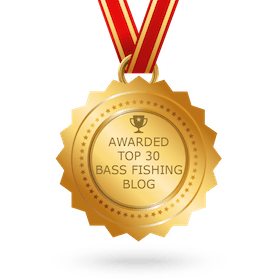Due to ecological, economic, and human health and safety concerns related to the potential impacts of nonnative animals, Alabama Administrative Code 220-2-.26 has been amended to prohibit any person, firm, association, or corporation from possessing, selling, offering for sale, importing, bringing, releasing, or causing to be brought or imported additional nonnative animals into the state of Alabama. The amended regulation is effective as of October 15, 2020.

“Native ecosystems can be extremely vulnerable to invasive species,” said Chris Blankenship, Commissioner of the Alabama Department of Conservation and Natural Resources (ADCNR). “If intentionally or unintentionally released into the wild, nonnative animals can outcompete native wildlife and upset the natural balance of that ecosystem. With this amended regulation, we are taking a proactive approach to help Alabama avoid the types of environmental challenges caused by nonnative species in other parts of the country.”
A ban on the following species is included in the amended regulation (220-2-.26):
- Any species of venomous reptile that has never naturally existed in the wild in Alabama, including but not limited to venomous snakes of the families including:

Viperidae
Viperidae – The Viperidae (vipers) are a family of venomous snakes found in most parts of the world
Atractaspididae – This subfamily includes many genera formerly classed in other families and subfamilies, on the basis of fang type. It includes fangless (aglyphous), rear-fanged (opisthoglyphous), fixed-fanged (proteroglyphous), and viper-like (solenoglyphous) species. Most of these snakes are inoffensive or far too small to envenomate a person effectively.
Elapidae – Members of the family have a wide range of sizes, from the 18 cm (7.1 in) white-lipped snake to the 5.85 m (19 ft 2 in) king cobra. Most species have neurotoxins in their venom, while some may contain other toxic components in various proportions. The family includes 56 genera with some 360 species and some 170 subspecies.
Hydrophiidae – (Sea Snake) They are found in warm coastal waters from the Indian Ocean to the Pacific and are closely related to venomous terrestrial snakes in Australia.
Colubridae, – While most colubrids are not venomous (or have venom that is not known to be harmful to humans) and are mostly harmless, a few groups, such as genus Boiga, can produce medically significant bites. (except for hognose snakes).

Atractaspididae

Elapidae

Hydrophiidae

Colubrid
Any species of bird, mammal, reptile, or amphibian listed as injurious wildlife by the U.S. Fish and Wildlife Service under the federal Lacey Act (18 U.S.C. 42)

Tegu
- Any species of Tegu – A common name of a number of species of lizards that belong to the families Teiidae and Gymnophthalmidae. Tegus are native to Central and South America. They occupy a variety of habitats and are known for their large size and predatory habits.
Persons currently holding any of the prohibited wildlife listed above without an ADCNR permit will be given 90 days from October 15, 2020, to notify the ADCNR’s Division of Wildlife and Freshwater Fisheries (WFF) and apply for a permit, lawfully export the animal(s), or voluntarily surrender the animal(s) to the appropriate WFF personnel without prosecution. Permit applications and instructions will be available at www.outdooralabama.com/restricted-possession-permit.
For more information about the ADCNR permit to possess certain restricted species, please contact:
Capt. Michael East, WFF Law Enforcement
DCNR.Enforcement@dcnr.alabama.gov
(334) 242-3467
Carrie Threadgill, WFF Nongame Wildlife Program Coordinator
DCNR.Wildlife@dcnr.alabama.gov
(334) 242-3469
The Alabama Department of Conservation and Natural Resources promotes wise stewardship, management and enjoyment of Alabama’s natural resources through four divisions: Marine Resources, State Parks, State Lands, and Wildlife and Freshwater Fisheries. To learn more about ADCNR, visit www.outdooralabama.com.











